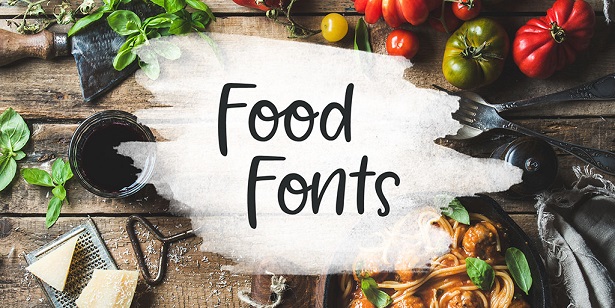Typography isn’t just about making words look good—it can influence behavior, emotions, and even appetites. When it comes to food fonts, choosing the right typefaces can elevate dining experiences, influence marketing success, and even guide better food choices. Whether you’re designing packaging, a restaurant menu, or an advertisement, understanding how food fonts work is key. This blog dives deep into the fascinating connection between fonts and food, offering insights and tips for anyone working in the food and design industries.
The Role of Food Fonts in Dining and Food Marketing
Food fonts aren’t randomly chosen. They play a vital role in shaping consumer impressions and behavior. These typefaces set the tone for how food is perceived and add depth to the story of a dish, product, or brand.
Here’s why food fonts matter so much:
- Fonts influence how a product or dish is perceived—luxurious, casual, organic, or fast.
- They reflect a brand’s personality and values.
- Fonts can entice customers to try (or avoid) certain foods.
How to Choose the Right Food Fonts
Picking the right food fonts requires precision, creativity, and an understanding of the audience. Below are practical tips for making informed font choices for food-related purposes.
- Match Fonts to Cuisine Style
Selecting food fonts that resonate with a cuisine type enhances your message. Some examples include:
- French Cuisine: Elegant fonts like Didot connote sophistication.
- Casual Dining: Playful fonts such as Lobster add a friendly, welcoming touch.
- Fonts for Fast Food vs. Fine Dining
Fast food logos often use bold, clear fonts for quick readability. Think Helvetica or Impact. Fine dining establishments, on the other hand, prefer refined serif fonts like Garamond or Baskerville, delivering a sense of luxury.
Choose fonts that reflect your service category:
- Fast-paced eateries should prioritize bold and simple typography.
- Upmarket restaurants should focus on delicate fonts with clean, aesthetic finishes.
- Consider Readability
Readability is critical, especially for menus or food packaging. Avoid over-decorative fonts that might confuse readers.
Improving readability tips:
- Use sans-serif fonts in small print settings.
- Pair decorative headings with simple body text.
- Impact of Color on Food Fonts
Food fonts work hand in hand with color. Red and yellow, for example, are linked with appetite stimulation. Pair these colors with bold fonts for fast-food designs, while muted tones pair well with rustic serif fonts to communicate homemade or organic quality.
The Psychology Behind Food Fonts
Ever wondered why certain fonts make you crave a burger while others don’t? It’s all about psychology! Designers selectively use food fonts to trigger emotions and send subliminal signals to the brain. Here are a few ways fonts work psychologically in food design.
Serif Fonts
These fonts create trust and nostalgia. Perfect for bakeries or family-style restaurants. Big brands like Coca-Cola use serif fonts strategically for a timeless, nostalgic feel.
Script Fonts
Script fonts are playful and engaging. Small cafes often use them to add charm and character.
Bold Sans-Serif Fonts
This font style works well for fast, modern food chains. Think Subway’s and McDonald’s typefaces—clean, modern, and memorable.
Examples of Effective Fonts in the Market
- Domino’s Pizza uses Helvetica Neue for clarity and modern flair.
- Whole Foods Market opts for serif fonts that emphasize organic trustworthiness.
Best Practices for Designers and Marketers
Here’s how to maximize the potential of food fonts in your designs:
- Be Consistent: Ensure typefaces align with brand identity.
- Pair Fonts Strategically: Use a mix of bold and light fonts to differentiate headings from body text.
- Test with Audiences: Get feedback to see how fonts resonate with target customers.
Additional Tools for Font Choices
Using tools like Google Fonts or Adobe Typekit simplifies font experimentation. Most are free or offer trial versions for accessibility.
Why Food Fonts Are the Secret Ingredient to Success
Food fonts shape more than visuals—they shape perceptions. When chosen carefully, they evoke trust, attention, and appetite, leading to more impactful marketing and design. Whether you’re creating a restaurant menu, packaging, or signage, food fonts make all the difference.
Apply these strategies, and watch your food-related design projects truly shine.
